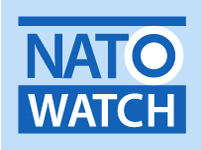NATO is rushing its withdrawal from Afghanistan and could risk reversing the gains made there during the past decade, according to a report by the Afghanistan Analysts Network. The report, called "Beating a Retreat," was written by former EU advisor Barbara Stapleton. It says NATO policy needs to be flexible if long-term security goals are to be achieved and that the transition process needs to be related to the condition of security, development, and governance.
Ronald E. Neumann, US ambassador to Afghanistan (2005-07) and Michael O’Hanlon, senior fellow at the Brookings Institution, reach a similar conclusion in an op-ed in the Washington Post.
International combat troops are to pull out of Afghanistan by the end of 2014. NATO says Afghan government forces are on track to take responsibility for security. The details of the withdrawal are to be hammered out tomorrow at the NATO summit in Chicago. Recent opinion polls show that American support for the war in Afghanistan is down to 27%.
Philip Hammond, the UK Defence Secretary, said that a "properly structured exit" is important for the alliance's cohesion, but believes the differences within NATO's leadership can be resolved. His statement came as official figures revealed that the UK has spent £17.3bn on the Afghan war since 2001, on top of normal defence spending. It could rise to £20bn by the time the last UK personnel leave.
NATO leaders no longer speak of bringing good governance to Afghanistan. Today’s objectives are more modest, and are often stated as simply preventing Afghanistan from being a source of international terrorism. President Obama’s national security adviser, Tom Donilon, said “The goal is to have an Afghanistan that has a degree of stability such that forces like al-Qaeda and associated groups cannot have safe haven unimpeded”. He added a second goal of creating “an Afghanistan that has a set of security assets that allow it to provide for that modicum of stability and to be able to protect itself against groups like that”.
But even these modest goals may be in doubt with a rush to cut funding. The current Afghan National Security Force of about 345,000 – an army of 195,000 and a police force of almost 150,000 – is just short of the goal of 352,000. But in Chicago NATO is expected to endorse a smaller force, with some floating numbers as low as 228,500. But moving quickly to the cheaper force is bad planning, and hardly worth saving a few billion dollars when the US is spending $100-billion a year on the war now, said Michael O’Hanlon, a senior fellow at Washington think tank the Brookings Institution.
Keeping Afghan security forces armed and fighting after 2014 in a country still heavily reliant on outside aid will cost an estimated $4 billion a year. To supplement American assistance, the Obama administration is asking its allies to provide $1.3 billion of that annually. However, reports suggest that the United States remains short of this goal by some $300-$500 million.
NATO Secretary General Anders Fogh Rasmussen, speaking in Brussels last month, said Chicago would not be a "pledging conference." But officials in Washington had hoped privately to secure those commitments before the summit, which is seen as an opportunity for Obama to brandish his foreign policy achievements before the November election.
But the economic problems in Europe and the United States, combined with ongoing concerns about corruption inside of Afghanistan, is making it difficult to get countries to make long-term commitments on funding for Afghanistan.
A World Bank report released this week on “Transition in Afghanistan: Looking Beyond 2014”, finds that much of the aid spending “for” Afghanistan was not actually spent “in” Afghanistan. For instance, the report says that 88% of assistance for Afghanistan had gone through the “external budget”, which is managed separately from the Afghan government’s finances, and that only 10-25% of money in the “external budget” has a “local economic impact”. Much of the remainder reportedly “leaves the [Afghan] economy” and is spent on imported materials, expatriated contractor profits and outward remittances.
